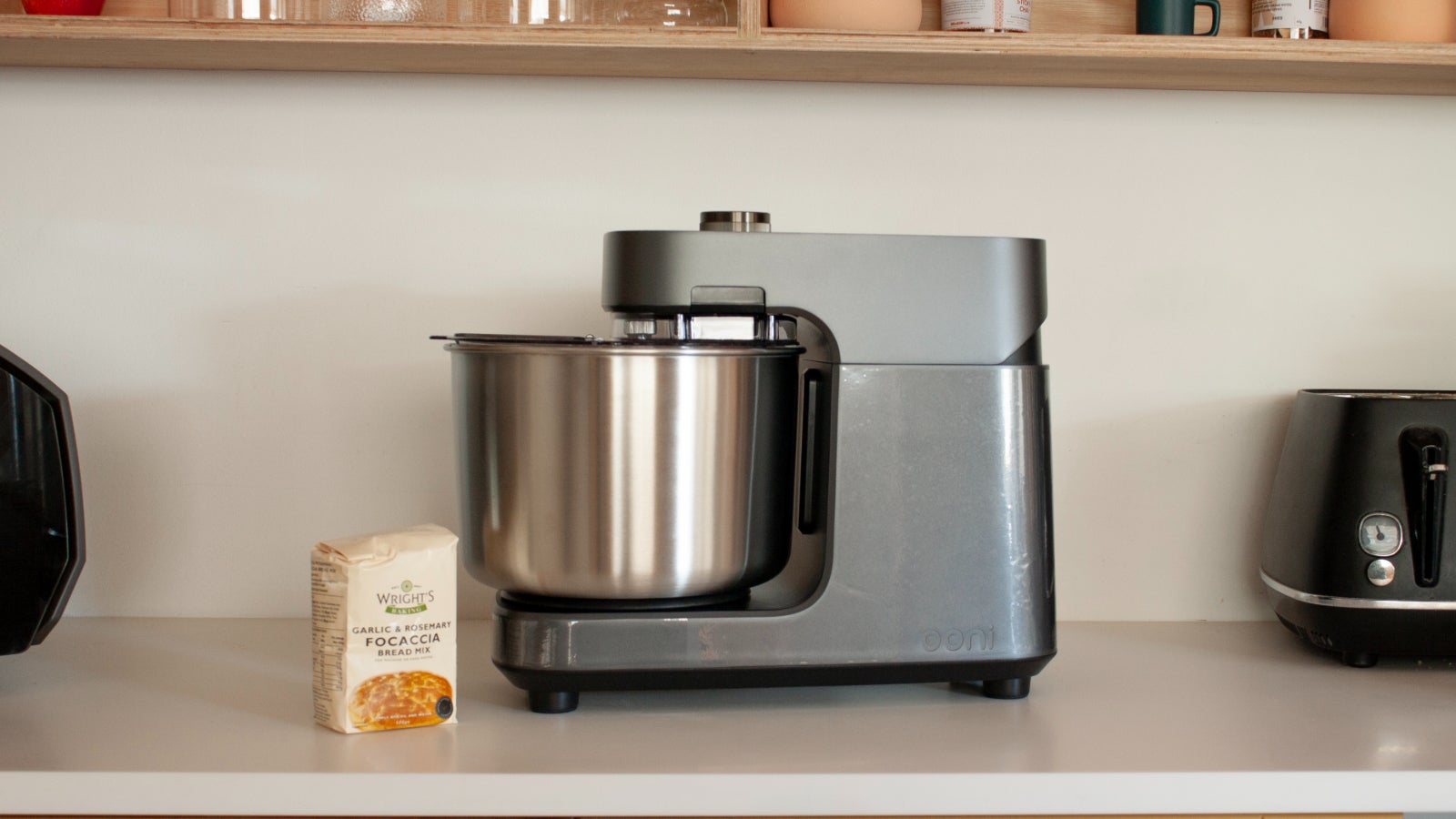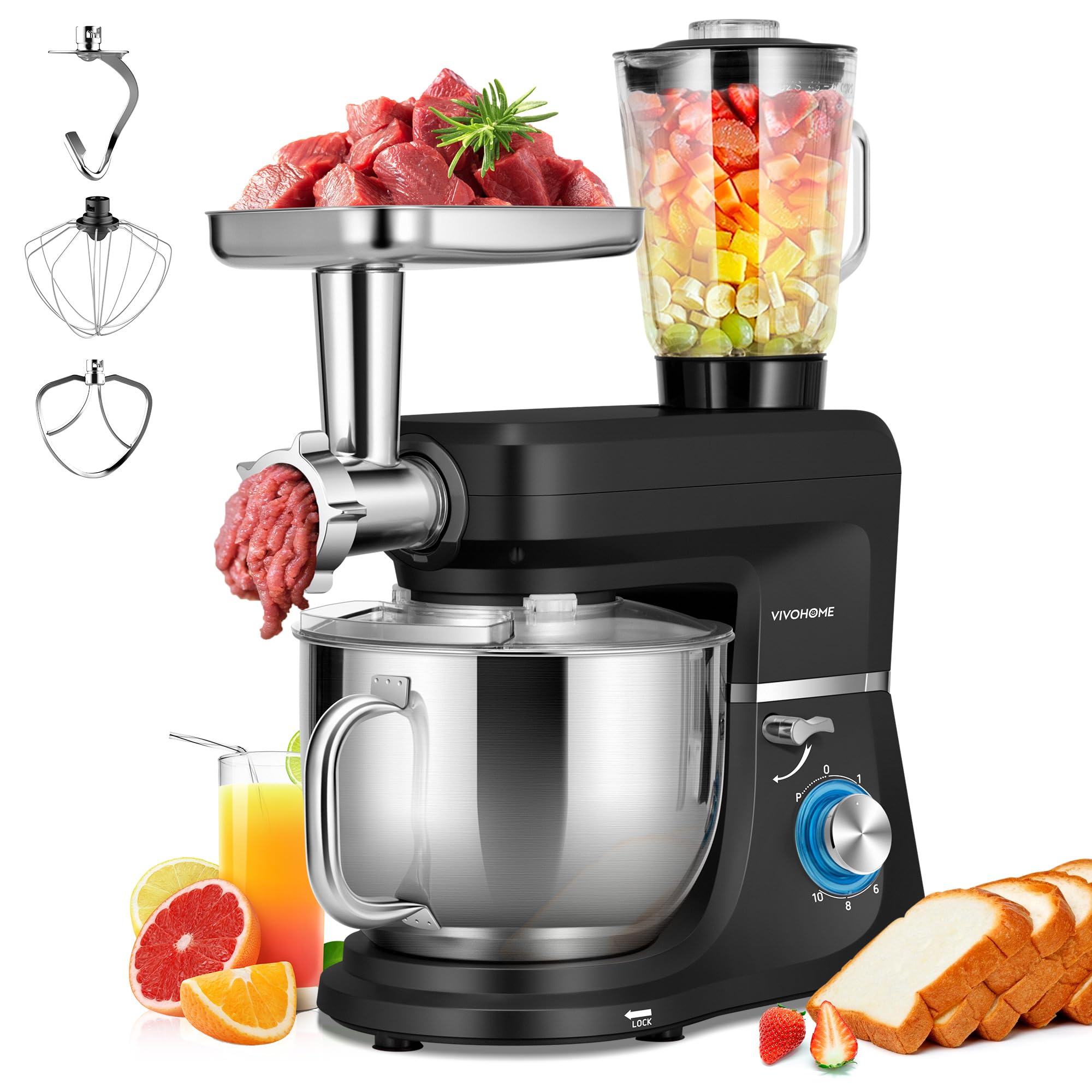Welcome to the heart of the kitchen, where flour flies and magic happens. If you’re here, you’re likely staring at that beautiful KitchenAid Artisan on your counter—or dreaming of one—and asking the ultimate question for any serious bread baker: just how far can I push this thing? Let’s talk frankly about How Much Dough Can A Kitchenaid Artisan Handle. It’s a question I get all the time at Stand Mixer Pro, and the answer is a little more nuanced than a simple number on a spec sheet.
Getting my first stand mixer was a game-changer. Suddenly, kneading dough went from a chore to a joy. But with great power comes great responsibility… and the very real fear of burning out that precious motor. You’ve invested in a culinary icon, and you want to respect its limits while still churning out glorious loaves of bread, pizza crusts, and bagels. So, let’s dive deep and get you the real, no-nonsense answer you need to bake with confidence.
The Official Word vs. The Real World
First, let’s get the manufacturer’s specs out of the way. KitchenAid is pretty clear about the capacity of its popular 5-quart tilt-head models, like the Artisan Series. They typically measure capacity by cups of all-purpose flour.
KitchenAid’s Official Guideline: The Artisan Series Stand Mixer can handle recipes calling for up to 9 cups of all-purpose flour. This translates to roughly 4.5 lbs (or about 2 kg) of bread dough.
Sounds simple, right? Well, not so fast. Any experienced baker will tell you that not all doughs are created equal. Nine cups of flour for a light, airy brioche is a walk in the park compared to nine cups for a dense, low-hydration bagel dough. This is where experience and a little bit of kitchen science come into play.
Understanding What Really Affects Dough Capacity
To truly understand how much dough can a KitchenAid Artisan handle, you need to think less about a fixed number and more about the type of stress you’re putting on the machine. The Artisan has a robust AC motor, but it’s a tilt-head model, which means the locking mechanism and the motor itself can be strained by particularly tough jobs.
Here are the key factors that really determine your mixer’s dough limit:
Dough Hydration: The Wet vs. Stiff Dough Showdown
This is the single most important factor. Hydration is simply the amount of water relative to the amount of flour in your recipe.
- High-Hydration Doughs (e.g., Ciabatta, Focaccia): These doughs are wet, sticky, and slack. They offer less resistance, making them much easier on your mixer’s motor. The Artisan can handle larger batches of these doughs quite comfortably.
- Low-Hydration Doughs (e.g., Bagels, Pretzels, some Pizza Crusts): These are the true heavyweights. A stiff dough with low water content develops a powerful gluten network that fights back against the dough hook. This creates significant strain on the gears and motor. For these types of doughs, you should always stay well below the 9-cup flour maximum. I personally wouldn’t push past 6-7 cups of flour for a stiff bagel dough.
Flour Type: Not All Flours Are the Same
Whole wheat flour is thirstier than all-purpose white flour. It absorbs more water and creates a denser, heavier dough. If you’re making 100% whole wheat bread, you’ll reach the mixer’s limit faster. A good rule of thumb is to reduce your recipe size by about 15-20% when using mostly whole grains.
Mixing Speed: The “Speed 2” Golden Rule
This is non-negotiable. KitchenAid explicitly states that you should never knead dough above Speed 2. It might be tempting to crank it up to get the job done faster, but you’re risking irreversible damage. The planetary mixing action is designed to be powerful and efficient at low speeds. Higher speeds are for whipping and creaming, not for wrestling with heavy dough. Resisting that urge will add years to your mixer’s life.
How to Know If You’re Overloading Your Artisan Mixer
Your KitchenAid will give you warning signs if it’s struggling. Learning to read these signs is crucial for protecting your investment. Are you pushing the limits of how much dough can a KitchenAid Artisan handle? Look for these red flags:
- The Motor Sings a Different Tune: You know the steady, confident hum of your mixer. If that hum turns into a groaning or straining sound, the motor is working too hard.
- The Head Starts to Bobble: On a tilt-head model like the Artisan, if the mixer head is bouncing or clicking at the locking pin, the dough is too stiff or the batch is too large. The force of the dough is literally trying to pry the head open.
- It Gets Hot to the Touch: The top of the mixer housing getting slightly warm during a long kneading session is normal. If it becomes genuinely hot, stop immediately. Let the motor cool down for at least 20-30 minutes.
- It Smells “Electric”: A faint smell of hot metal or ozone is a serious warning sign that the motor is overheating and on the verge of burning out. Unplug it right away.
According to kitchen appliance engineer, David Chen, “The gear system in a stand mixer is its most vulnerable point when dealing with heavy loads. The ‘click-clack’ sound people hear when the head bounces is often the sound of immense pressure on those gears. Consistently pushing it to that point is the fastest way to a costly repair.”
Pro Tips for Making Bread in Your Artisan
Okay, so we know the limits. Now, how do we work smartly within them? Here are my go-to strategies for making fantastic bread with the KitchenAid Artisan without sending it to an early grave.
- Split Batches: If your favorite recipe is massive, just split it in half. Kneading two smaller batches back-to-back is infinitely better for your mixer than tackling one giant, motor-straining one.
- Use an Autolyse: This is a fancy word for a simple technique. Before you add the salt and yeast, just mix the flour and water until combined and let it rest for 20-30 minutes. This gives the flour time to fully hydrate, which kick-starts gluten development and dramatically reduces the final kneading time.
- Feel the Dough: Don’t just rely on time. A perfectly kneaded dough should be smooth, elastic, and pass the “windowpane test” (you can stretch a small piece thin enough to see light through it without it tearing). This often takes less time than recipes suggest, especially with an efficient mixer.
- Finish by Hand: For very stiff doughs, I sometimes use my Artisan for the initial mixing and then turn the dough out onto the counter for the last minute or two of kneading by hand. It gives me a better feel for the dough’s development and saves my machine from the toughest part of the job.
When to Consider an Upgrade: Artisan vs. Bowl-Lift
The KitchenAid Artisan is a phenomenal, versatile machine perfect for the vast majority of home bakers. It excels at cakes, cookies, meringues, and moderate bread making.
However, if you find yourself regularly making multiple large loaves of dense bread, churning out dozens of bagels every weekend, or starting a small home bakery, you might be outgrowing your Artisan. This is when you should look at KitchenAid’s bowl-lift models, like those in the Pro Line or Commercial series.
| Feature | KitchenAid Artisan (Tilt-Head) | KitchenAid Professional (Bowl-Lift) |
|---|---|---|
| Motor Type | AC (Alternating Current) | DC (Direct Current) |
| Power | Excellent for most tasks | Higher torque, better for dense loads |
| Design | Head tilts back for bowl access | Bowl is raised/lowered on a lever |
| Stability | Good, but can struggle with heavy dough | Extremely stable due to fixed head |
| Best For | All-around baking, moderate bread dough | Frequent, large batches of heavy dough |
The DC motors in the bowl-lift models are quieter and provide more torque (think of it as pulling power), which allows them to handle stiff doughs without straining. The fixed head design also makes them far more stable during heavy-duty kneading.
Frequently Asked Questions (FAQ)
Q1: How much sourdough can a KitchenAid Artisan handle?
Sourdough can be tricky as its hydration varies. For a typical 70-75% hydration sourdough, the Artisan can comfortably handle a recipe using up to 1000g (about 7-8 cups) of flour. For denser, lower-hydration sourdoughs, it’s best to stick to smaller batches.
Q2: Can the KitchenAid Artisan handle 100% whole wheat dough?
Yes, but with caution. Whole wheat flour creates a heavier dough. A safe limit for a 100% whole wheat loaf in an Artisan is a recipe using about 6 cups of flour. Pushing it further could strain the motor.
Q3: What happens if I accidentally knead dough on a speed higher than 2?
Doing it once or twice for a short period might not cause immediate damage, but it puts unnecessary stress on the gear case. Making a habit of it will lead to premature wear and tear and could eventually cause the gears to strip, which is a significant repair.
Q4: Is the KitchenAid Artisan good for making pizza dough?
Absolutely! It’s fantastic for pizza dough. Most pizza dough recipes fall well within the Artisan’s capacity. A standard recipe using 500-600g of flour (enough for two or three large pizzas) is a perfect job for this machine.
Q5: How long should I knead bread dough in my Artisan mixer?
Using the dough hook, most doughs will be fully kneaded in 6-10 minutes on Speed 2. Over-kneading is possible, so always check for the signs of a well-developed dough, like the windowpane test.
The Final Takeaway
The KitchenAid Artisan is more than just a pretty face on your countertop; it’s a capable and reliable workhorse. For the vast majority of home baking adventures, from celebration cakes to a weekly loaf of sandwich bread, it’s all the mixer you’ll ever need.
The key is to understand its strengths and respect its limits. By paying attention to dough hydration, flour type, and batch size, you can confidently answer the question of how much dough can a KitchenAid Artisan handle for your specific recipe. Listen to your machine, use the golden rule of Speed 2, and it will reward you with beautifully crafted baked goods for many years to come.
Happy baking! Let us know in the comments what amazing bread you’re making with your stand mixer.